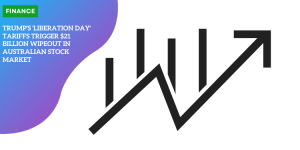Smart Shopping Guide: Why Australians Made Black Friday Their Biggest Spending Day
Overview of November Spending Trends
November marked a notable increase in household spending for Australians, with a boost of 0.4%, largely driven by the excitement of Black Friday.
Six out of nine spending categories saw growth, highlighting how consumers eagerly took advantage of the deals and discounts available during this major shopping event.
Category Growth
The end of the year period traditionally sees an uptick in consumer behavior, but November 2023 was particularly special due to the significant influence of Black Friday sales.
The sales event proved to be a major driver of consumer activity, with both discretionary and essential spending categories seeing a lift.
Recreation and culture witnessed notable growth of 0.9%, driven by exceptional Black Friday deals.
People went out to enjoy themselves more, spending on entertainment options such as cinema tickets for new hits like “Wicked”, “Gladiator II”, and “Moana 2”.
This category’s growth was a continuation of the October trend, where household spending benefited from international music concerts and sporting events.
Consumer Goods
Goods spending saw a healthy rise of 0.9% month-on-month, with categories like food, vehicles, and clothing leading the charge.
Consumers indulged in their love for SUVs as these vehicles dominated sales, while passenger vehicles fell to just 13.7% of the market share.
The strong performance in the vehicle sector indicates consumer confidence and the desire to secure high-value purchases during the discount period.
 Clothes were one of the best-selling products
Clothes were one of the best-selling products
Regional Variations
Spending patterns varied across regions.
Queensland led with a 0.7% growth, showcasing a strong recovery and possibly a more robust consumer confidence compared to other regions.
Victoria and South Australia followed closely with growth rates of 0.5%.
However, not all regions shared in the spending spree; the Australian Capital Territory (ACT) and Tasmania experienced declines in spending, with decreases of 0.4% and 0.2%, respectively.
Changing Priorities
Black Friday sales primarily boosted discretionary spending, but some areas remained unaffected.
Categories like miscellaneous goods and services, accommodation, and dining out saw minimal to no growth.
Meanwhile, spending on alcohol and tobacco continued to decline, maintaining levels below those seen before the pandemic.
These shifts indicate a change in consumer priorities, possibly favoring entertainment and recreation during promotional periods while staying restrained in other less essential categories.
The November spending trends highlight both the resilience and shifting behaviors of Australian consumers, reflecting a mix of caution and willingness to spend where there’s perceived value.
Moving forward, other sectors may need to innovate to attract consumer attention during these key spending periods.
Entertainment and Recreation Boom
Cinema Hits Rule the Roost
November saw a substantial uptick in household spending in the entertainment and recreation sector, growing by 0.9% compared to the previous month.
One of the biggest contributors to this growth was the high turnout at cinemas. Blockbuster releases such as Wicked, Gladiator II, and Moana 2 were major crowd pullers, driving a remarkable surge in cinema attendance.
This surge indicates that after months of restrained spending, Australians were eager to indulge in these highly anticipated films.
Carrying Momentum from October
The entertainment sector had already seen impressive numbers in October, largely owing to significant international music concerts and sporting events drawing crowds.
This momentum spilled over into November, coupled with Black Friday promotions, which further incentivized spending on recreation and culture.
The combination of these forces created robust growth that was difficult to ignore.
Bargains Not Just for Gadgets
Interestingly, Black Friday, often associated with tech deals and fashion sales, also played a pivotal role in boosting spending in the recreation and culture category.
Discounts on movie tickets, streaming services, and recreational activities became as appealing as traditional electronics and fashion deals, which helped solidify the month’s impressive growth figures in this sector.
Broader Impacts
It’s also worth noting the broader impact this had on other segments within the entertainment sector.
With consumers spending more on movie tickets and other cultural experiences, there was also an uptick in related activities, such as dining out before or after a movie and purchasing merchandise, creating a composite effect that fueled spending further.
This combination of factors points to an interesting trend where Australians are increasingly valuing experiences, especially those that allow them to indulge in cultural phenomena.
As we move forward, maintaining this enthusiasm for entertainment and recreation will be key.
Understanding how these trends shape broader consumer behavior can provide valuable insights for businesses and policymakers alike.
Consumer Goods and Vehicle Sales
November saw a robust 0.9% month-on-month increase in goods spending in Australia.
This upswing was prominently evident across several key categories, including food, vehicles, and clothing.
The timing of Black Friday sales played a crucial role in fueling this growth as consumers seized the opportunity to snag deals on items ranging from daily essentials to high-value products.
Food, Vehicles, and Clothing: Leading the Growth
The food sector saw significant spending, with households prioritizing their grocery shopping perhaps more due to attractive discounts available during Black Friday promotions.
Clothing and footwear also witnessed a surge, buoyed by heavy discounts and promotional offers that enticed cash-conscious consumers to update their wardrobes.
SUVs Steal the Spotlight
The vehicle sector experienced noteworthy dynamics in November.
Consumer preference for vehicles skewed heavily towards SUVs and light commercial vehicles.
This trend was highlighted by the Federal Chamber of Automotive Industries (FCAI), noting SUVs dominated the market landscape.
In contrast, sales of passenger vehicles continued to wane, dipping to a mere 13.7% of the market share.
Despite the overall strength seen in new vehicle purchases, this preference shift underlines an evolving consumer mindset where practicality and versatility offered by SUVs meet growing demand.
Consumers leaned into the practicalities and perceived safety of larger vehicles, a pattern that has been increasingly evident in recent years.
Factors Influencing New Vehicle Trends
The strong performance in the automotive segment can be attributed to several factors beyond just the sales events.
Economic fluctuations, changing family dynamics, and lifestyle preferences significantly influence consumer tendencies towards specific vehicle types.
These elements likely combined with Black Friday deals to drive up the numbers, particularly for SUVs.
As consumers continue to navigate an evolving economic landscape, their spending patterns offer insightful glimpses into changing priorities and preferences.
However, vehicles remain a critical segment of expenditure, indicative of broader economic sentiments and personal lifestyle adjustments.
Looking ahead, the trends in consumer goods spending, particularly in the automotive sector, will be closely watched as indicators of economic recovery and consumer confidence.
Regional Spending Patterns
Leaders in Growth: Queensland, Victoria, and South Australia
November’s spending data showcased distinct regional trends across Australia.
Queensland led the pack with a substantial 0.7% increase in household spending.
This impressive rise can be credited to robust consumer activity during the Black Friday sales, which injected momentum into various spending categories.
Victoria and South Australia followed closely with a 0.5% increase in spending.
The steady growth in these states highlighted a consistent boost in consumer confidence, propelled mainly by the bargains available during the Black Friday shopping extravaganza.
This period of aggressive promotional activity spurred purchases in recreational and cultural categories, ensuring these states maintained a healthy economic pulse.
Declines in ACT and Tasmania
While Queensland, Victoria, and South Australia basked in their spending upticks, other regions faced a downturn.
The Australian Capital Territory (ACT) and Tasmania experienced spending declines of 0.4% and 0.2%, respectively.
These figures reflected a more cautious consumer approach in these regions, perhaps due to varying economic conditions or consumer confidence levels.
The decline in spending in ACT and Tasmania might suggest that consumers in these regions were more conservative with their finances, prioritizing essential goods over discretionary spending.
This cautious behavior could be attributed to lingering economic uncertainties or a cautious response to rising living costs.
The Impact of Regional Variations on Overall Spending Trends
These regional spending patterns paint a diverse and complex picture of consumer behavior across Australia.
The stark differences in spending growth between regions demonstrate how local economic conditions and consumer confidence levels can influence broader spending trends.
The overall increase in household spending, propelled by Queensland’s leading growth, underscores the pivotal role of regional dynamics in shaping national economic outcomes.
While some regions may thrive, others might face challenges, revealing the intricate balance that governs consumer spending patterns.
As we continue to explore the forces shaping consumer behavior, it’s crucial to recognize that these regional variations are a microcosm of the broader national economic landscape.
Moving forward, understanding these nuances will be vital to comprehending the shifts in consumer priorities and spending habits.
By concluding on the broader national implications of regional spending variations, this chapter seamlessly transitions to the next topic of investigation, maintaining a cohesive narrative flow.
Shifting Consumer Priorities
November’s retail frenzy centered around Black Friday, a significant driver behind the surge in discretionary spending.
Consumers flocked to deals across various categories, adapting their spending habits along the way.
Discretionary Spending Push
Black Friday left a noticeable mark on discretionary spending.
Categories like recreation, culture, clothing, and footwear witnessed remarkable upticks.
Customers were drawn to hefty discounts, especially in electronics, fashion apparel, and outdoor activities.
These promotional events provided a brief respite from the year’s tighter budgeting constraints, encouraging shoppers to indulge in products and experiences they might have otherwise postponed.
Miscellaneous Goods and Dining Out
While some areas saw robust spending, not every category shared in the boon.
Miscellaneous goods and dining out remained relatively subdued.
For many Australians, tight budgets meant prioritizing essential goods and high-impact purchases over frequent smaller expenditures.
Spending patterns revealed a focus on securing great deals during major sales, while less critical or routine purchases were deferred.
Restaurants and cafés experienced stagnant spending as households continued to tighten their belts, opting for home-cooked meals over dining out.
The subdued activity in miscellaneous expenditures suggested a cautious approach to discretionary spending beyond the holiday discounts.
Alcohol and Tobacco Trends
Alcohol and tobacco spending patterns showcased another interesting shift.
This segment has consistently remained below pre-pandemic levels.
Various factors contribute to this trend, including health-conscious movements and tighter household budgets.
As a result, these categories didn’t experience the same revival seen in other discretionary items during Black Friday.
The enduring weakness in alcohol and tobacco purchases underscores a broader shift in consumer priorities towards more essential and perhaps health-conscious decisions.
Additionally, consumers might be reallocating their budgets to high-value experiences and goods that offer more immediate satisfaction or long-term utility.
Understanding these evolving spending behaviors provides a nuanced picture of the Australian consumer landscape, highlighting the dynamic interplay between economic pressures, promotional events, and shifting lifestyle choices.
Overall, households adapted their spending habits, emphasizing value-packed purchases during promotional periods while maintaining austerity in less critical areas.
This balancing act is key to navigating today’s economic landscape.
Next, we’ll delve deeper into how different regions contributed to the overall spending trends and their varied responses to these shifting consumer priorities.







